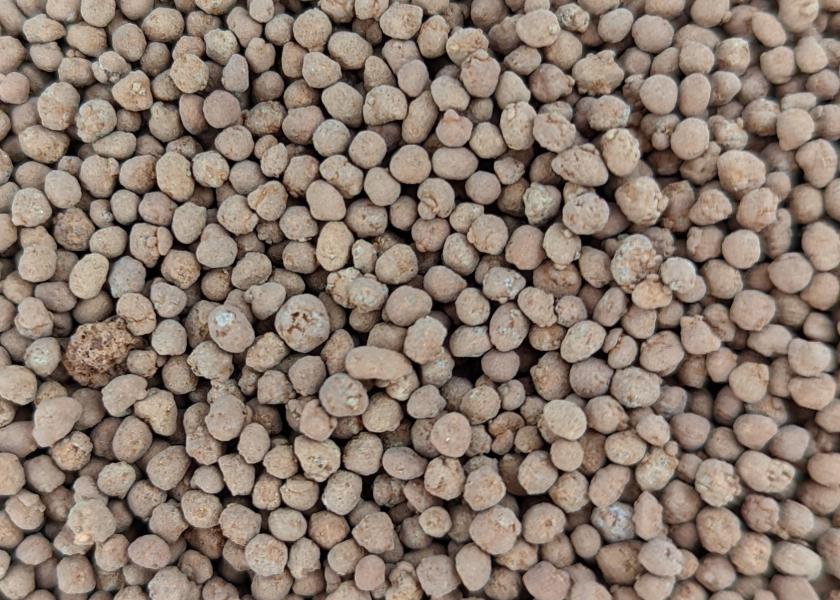One New Way to Get More Phosphate in The Plant

In the past year, over 30 retailers, some among the largest in the US have signed on to trial and sell RhizoSorb 8-39-0, a dry fertilizer product from Phospholutions, which is marketed to reduce carbon emissions by 45% while increasing plant phosphate uptake by 50%.
Based on a technology licensed from Pennsylvania State University used in phosphorus research for 30 years, RhizoSorb is embedded into the fertilizer granule at production. The team at Phospholutions has been working for the past seven years to bring the product to market.
Over the past five years, the company had more than 500 small plots and field-sized trials as of the commercial launch in March 2023.
“The technology is embedded during the production process, so we are working with the whole channel to partner with manufacturers and make the product widely available to farmers via ag retail,” says Craig Dick, VP of Sales and Marketing at Phospholutions.
He adds the company will have its first large-scale shipment of product received in February for distribution in the spring 2024 season, with a primary focus to serve the Midwest Corn Belt.
“We are registered in every state in the U.S. except California and Maryland,” Dick says.
The Product’s Promise
“Think of RhizoSorb as MAP 2.0. This is the biggest thing since the 60s. There is no tech that has been able to help growers in this way,” Dick says. “It arrives at the retail location ready to apply. It is the first technology to increase Anionic Exchange Capacity, which leads to up to 33% less volume needed to be applied. And it’s based on plant-driven release, so up to 50% more phosphorus makes it into the plant.”
Instead of managing for soil tie-up of P205 with overapplication, RhizoSorb aims to be more efficient.
“The goal is to be more efficient with nutrient use and avoid soil tie-up and environmental losses,” Dick says. “We can help farmers be more effective in their production and pocket the savings to put toward another aspect of improving their production.”
RhizoSorb 8-39-0 does not require any different handling or storage parameters than traditional MAP or DAP.
“Retailers can sell RhizoSorb at a per ton premium—they can maintain or increase margins having to handle less overall volume while providing the grower an overall discount because they are getting more phosphorus into the plant.”
From the company’s economic analysis, compared to MAP or DAP, the RhizoSorb product can provide about $20 on net ROI, factoring in 10 to 15% savings plus a yield increase.
“We make bold claims, and we want to show the research that backs the claim,” Dick says.
Plans for 2024
In its 2023 launch year, Phospholutions sold out of its RhizoSorb volumes, which encourages them to expand their footprint in the year ahead.
The company is offering a RhizoSorb Grower Guarantee, which is a limited scale warranty backed program for 200 acres applied to corn, and the grower can qualify for a warranty payment if yields are less than their 10 year APH. The program pays up to $40/acre. Growers must enroll by March 31.
“The No. 1 thing we hear is it sounds great, but growers aren’t sure they believe us. So we want to put our money where our mouth is,” Dick says.
One market segment eager to get more experience with the product is the strip-till market.
“Compared to MAP there is a 30% reduction in salt index–the strip till growers really want this product,” Dick says. “For them phosphorus isn’t typically the limiting factor, so RhizoSorb allows them to reduce the blend volume and replace with something else like micronutrients or a biological—they have more room in the blend.”
Dick summarizes the product’s goal by saying, “growers understand phosphorus is hard to get into the plant. RhizoSorb makes it simple: more phosphate in the plant to drive more yield and more efficiency.”







